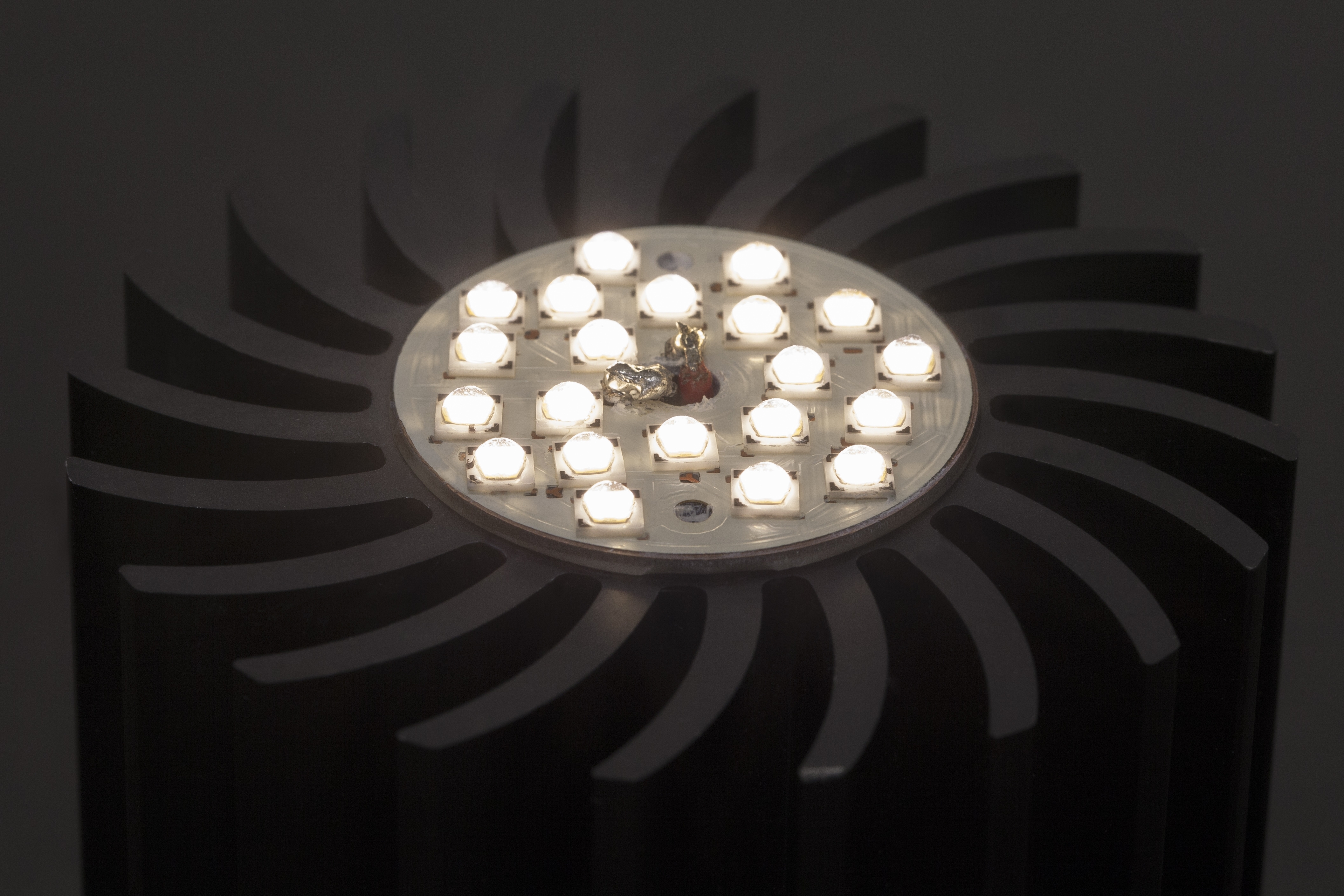How LED lighting can affect our internal clock
The Rhythm of the Light
Light has an enormous influence on our wellbeing and on our day-night rhythm. Whether it is to synchronize our internal clock or to assess hazardous/dangerous situations – since time immemorial, light has had an impact on our actions and has been researched ever since. Modern work environments design whole lighting concepts based on our internal rhythm. Since the development of the white LED, the efficient light-emitting diode has been firmly established in the Fraunhofer IAF research canon. Within the current research project SusLight, experts, for example, engage with the effects of different color values of LED light on the viewer.
For their work on the »internal clock«, three American researchers have just been awarded with the Nobel Prize in Medicine. According to the awardees, our genes are co-responsible for the functioning of our internal day-night rhythm. Yet, daylight is highly significant for us humans: As an external factor, it supports the daily synchronization of the internal clock. The Interaction of a whole range of hormones, synchronized by light, ensures that we become tired in the evening and active again in the morning. If we are surrounded by the »wrong« light signals for too long, this will throw our internal clock out of its rhythm and impact our wellbeing or even our health.
Adaptive LED lighting allows for need-based generation of artificial light varying in brightness and color temperature and for the light to adapt to its environment. For the project »SusLight«, Fraunhofer IAF researchers work in collaboration with colleagues from the University of Freiburg and the Hahn-Schickard Gesellschaft in Freiburg to improve the efficiency, acceptance and sustainability of LED lighting. The project tackles, among other issues, questions of how to actively control the chromaticity of LED light, which color temperatures are positively accepted by users, and which product attributes prove relevant for the user. Apart from low-loss LED drivers, the experts develop long-lasting LED modules with high color quality and light output.
Intelligent LED control focuses on the human being
Within the frame of the project, an intelligent sensor technology for smart home applications is implemented. It is able to adjust the light of the environment with an active hue adjustment to specific human needs and behavioral patterns. Experts call this procedure »Human Centric Lighting« (short: HCL[1]). This intelligent light control is supposed to consider which light effects are proven to be beneficial to us humans at which times of the day and which will harm us in the long run.
The color values of the light have different proven emotional and biological effects on the human organism: If a lamp emits light with 3000 Kelvin, therefore a low color temperature, we perceive the lighting as »warm« light. This is generally regarded to be relaxing. With 5000 Kelvin and more, light has a »cold« color temperature for us. This has a stimulating effect[2], however, it can negatively impact sleep onset patterns. Depending on the viewer and the time of the day, the acceptance and perception of the light varies greatly between the two values.
In order to realize human-centered lighting, experts of the Fraunhofer IAF collaborate with colleagues of the Hahn-Schickard Gesellschaft to implement sensors in a lighting system. Data about the presence of people, the required light intensity as well as the color temperature are recorded. A system passes on the values of the sensors to a control system, which is able to regulate the LED modules separately. Each LED system luminaire represents an independent unit within a ZigBee network. The intelligent hue adjustment can thus be easily integrated into smart home solutions.
Durable and cost-efficient LEDs with robust driver electronics
One of the challenges of modern LEDs lies in their operating electronics: »Many state of the art LEDs are unable to reach their theoretical, extremely high lifespan, because their driver electronics fails much earlier. One of the project’s objectives was therefore to increase the lifespan of the driver«, Fraunhofer IAF project manager Dr. Michael Kunzer explains. »Up to now, we were able to implement an LED module with up to 189 lm / W as well as an LED driver based on gallium nitride with more than 90% conversion efficiency«, Kunzer elucidates.
[1] LED light with active chromaticity control for the biologically effective light.
[2] Source: https://www.iaf.fraunhofer.de/de/medien/newsarchiv/led-lampen-fuer-den-alltag.html (source only available in german)
Photos in print quality
The use of this photographs is only permitted in relation to this press release.
Further information on the topic:
- The project SusLight at Fraunhofer IAF
- LED lamps: less energy, more light (iaf.fraunhofer.de)
Last modified:
 Fraunhofer Institute for Applied Solid State Physics IAF
Fraunhofer Institute for Applied Solid State Physics IAF